In the last quarter of 2017 Mara Elephant Project took some significant steps toward protecting elephants in the critically endangered Mau Forest, part of the greater Mara ecosystem. There was a serious logging issue discovered in this forest with the help of our existing partners Kenya Wildlife Service (KWS), Narok County Government (NCG) and Kenya Forest Service (KFS) that needed to be addressed immediately in order to protect both the wildlife and habitat of this forest. MEP provided both aerial and on-the-ground support with our Karen Blixen Camp Ree Park Safari helicopter and rapid response unit providing reconnaissance to the authorities.
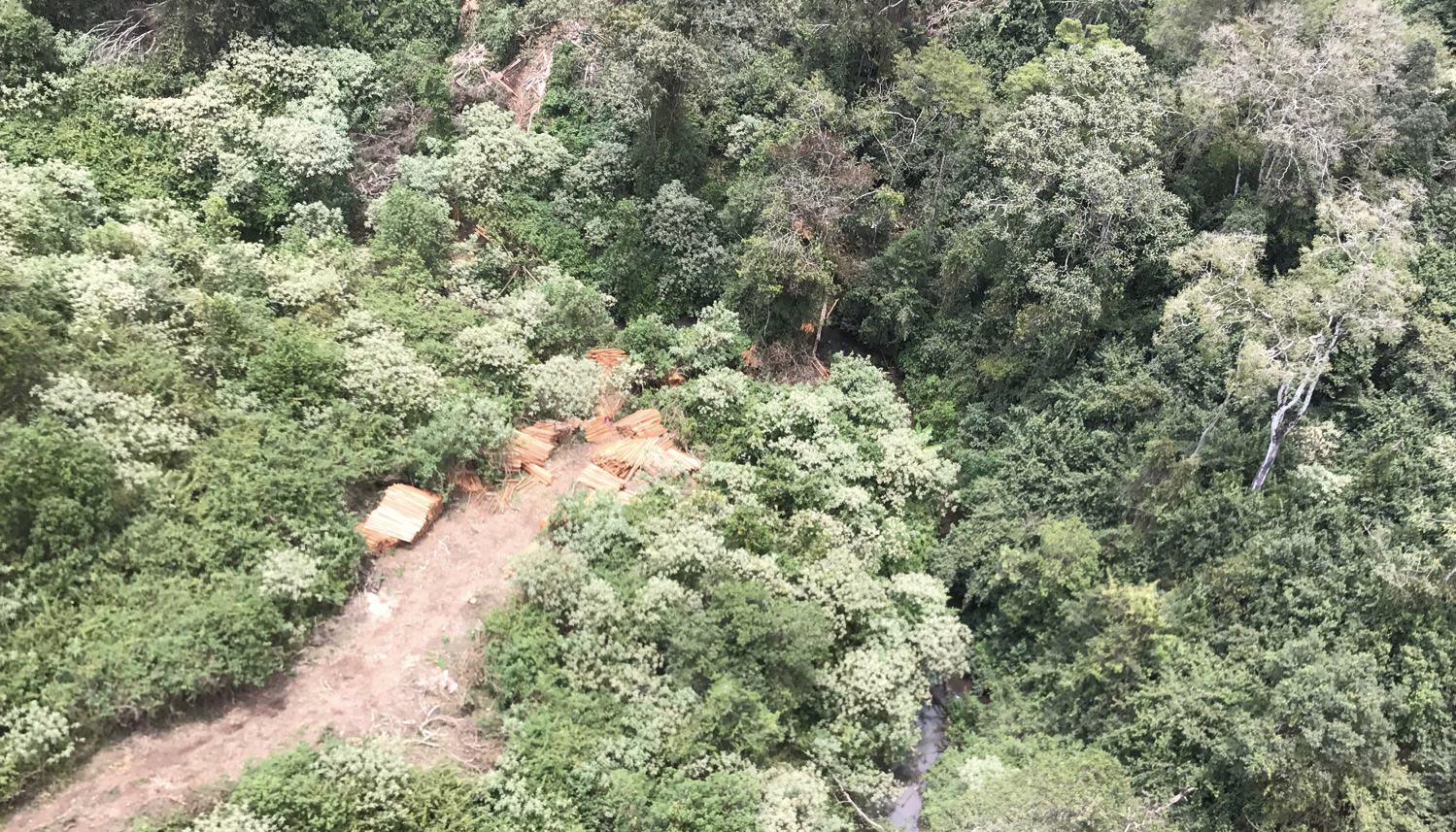
An illegal logging operation pictured during an aerial reconnaissance flight done in the MEP helicopter.
In October, November and December, MEP had a rapid response unit on the ground in the Mau Forest where they’ve not only recorded illegal logging, but helped mitigate human-elephant conflict as well. The culmination of their hard work took place when we were able to collar two elephants in the eastern Mau Forest. These are the first elephants to be collared in the Mau. One was a female with a large herd of 60 elephants that we’ve named Nancy.

Elephant Nancy spotted during an aerial monitoring flight.
The second was a bull elephant named Wilber that was crop raiding with a small bull herd.
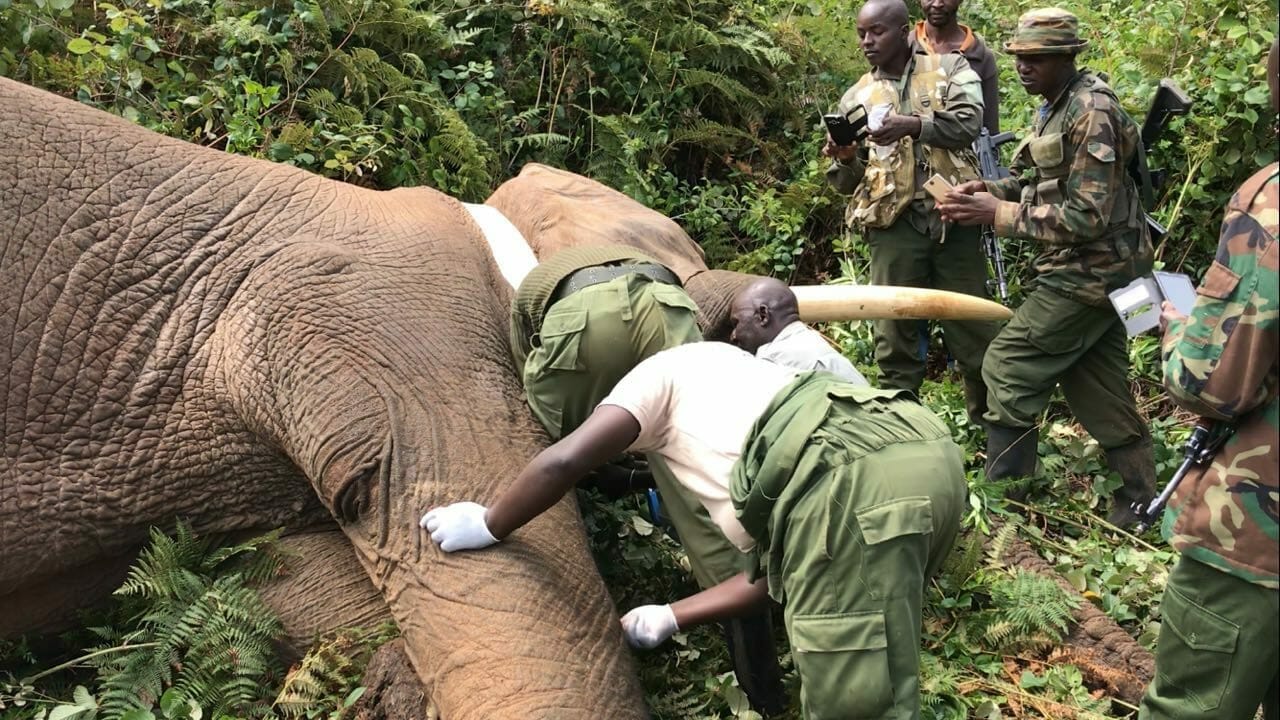
Big bull Wilber being collared, which took a team effort.
These two candidates represent the surprisingly large population of elephants living in this forest that are at risk. No one has ever collected elephant movement data from this forest and already the movement data these two elephants are providing has been extremely interesting and useful in directing the rapid response unit’s movements.
We’re extremely worried about the lack of connectivity between the eastern and western portion of the Mau Forest. We have received permission from KWS to collar two additional elephants in the western Mau Forest in 2018. If you’re interested in supporting this effort, please contact me.
The Karen Blixen Camp Ree Park Safari helicopter continues to be an invaluable asset to MEP operations. Not only were we able to use it to undertake reconnaissance in the dense Mau Forest, but it also ensured that both collaring operations went off safely for both the elephants being collared and the rangers and vet involved.
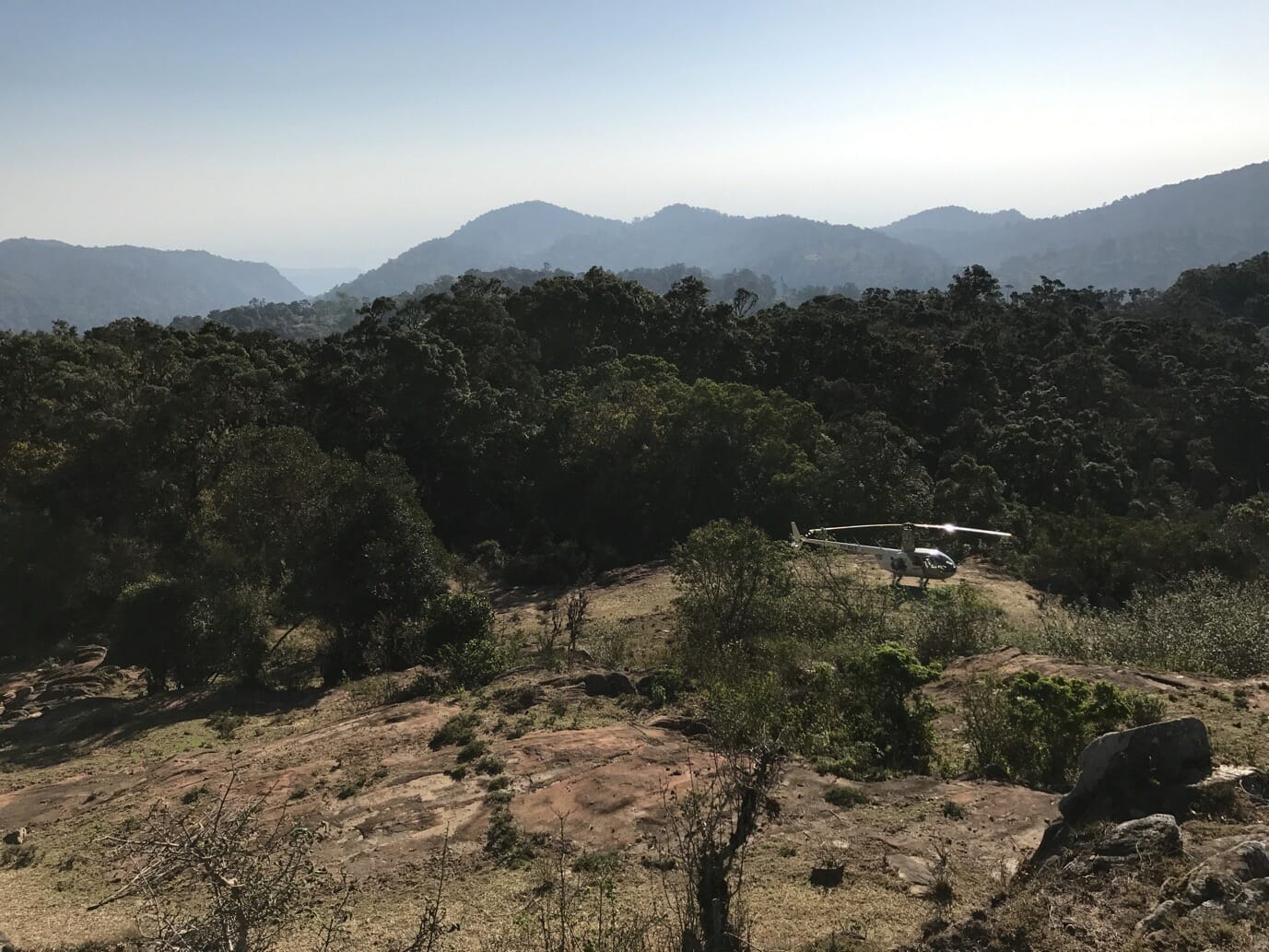
The MEP helicopter landing pad while out on reconnaissance flights.
We also had our very first pachyderm passenger in the helicopter when a baby elephant was found near death and transported to the David Sheldrick Wildlife Trust (DSWT) orphanage in Nairobi. The video associated with this rescue has gotten MEP quite a bit of press with mentions on National Geographic and the Daily Mail.
We also flew a medical transport for a little girl that was injured by an elephant and as a result collared the elephant responsible.
The helicopter is an essential tool in MEP’s human-elephant conflict toolkit that saves both elephant and human lives and needs to be funded to continue our success in 2018.
DSWT/KWS vet, Dr. Limo, with MEP C.E.O. Marc Goss using the aerial advantage of the helicopter to dart the large bull MEP collared named Lempiris.
I really enjoyed the visit from Jake Wall, a member of the Save The Elephants research team and chair of MEP’s Scientific Committee. Our exciting development in October was that MEP and Mara Conservancy now have our own Domain Awareness System (DAS) chapter, which means we are able to populate the system with MEP data directly and get automated reports from our efforts. We’ve been using DAS more and more for reporting versus the WILD app. We are having issues with WILD not being able to export tracks and tabulate patrol data; however, we can still better keep on top of ranger movements with WILD so it’s still useful operationally.

MEP ranger patrol tracks from November.
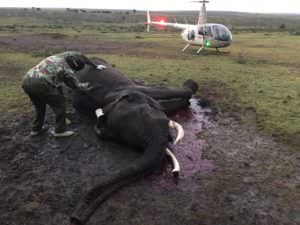 We lost collared elephant Courtney to human-elephant conflict (pictured left) in this quarter, but we’ve managed to re-collar several elephants. Limo’s collar dropped off in November and we were successful in re-collaring him for a new three-year time. Santiyan dropped her collar in December, and unfortunately, due to the large size of her herd and the dusty conditions, we were unable to find her again to re-collar. The good news is that another female candidate in the herd was successfully collared instead and we’ve named her Earhart.
We lost collared elephant Courtney to human-elephant conflict (pictured left) in this quarter, but we’ve managed to re-collar several elephants. Limo’s collar dropped off in November and we were successful in re-collaring him for a new three-year time. Santiyan dropped her collar in December, and unfortunately, due to the large size of her herd and the dusty conditions, we were unable to find her again to re-collar. The good news is that another female candidate in the herd was successfully collared instead and we’ve named her Earhart.
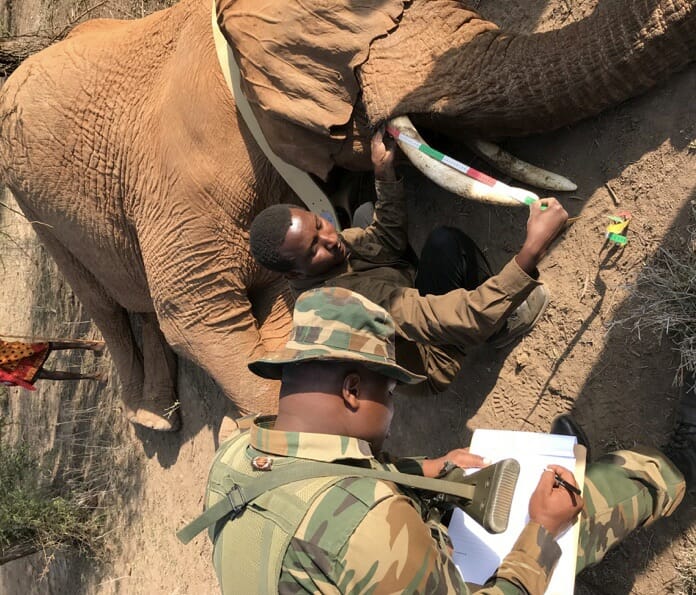
MEP rangers taking notes and measurements while collaring Earhart.
Overall, I’m very excited about the strides MEP has taken in the last quarter of 2017 and I look forward to 2018 and being able to expand our area of operation to protect more elephants and continue to conserve the greater Mara ecosystem.


